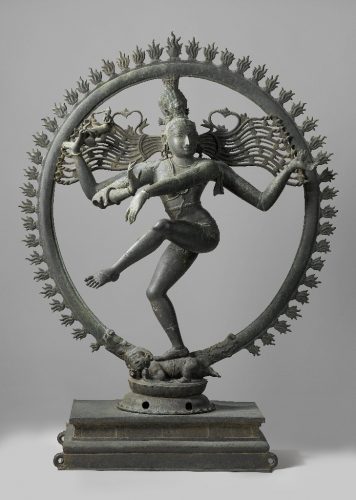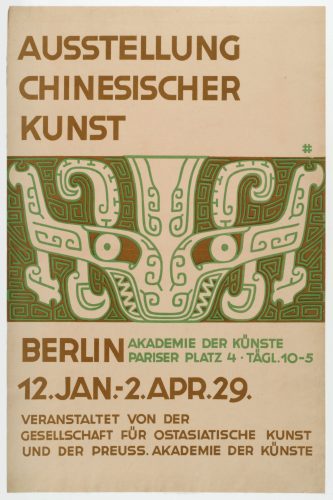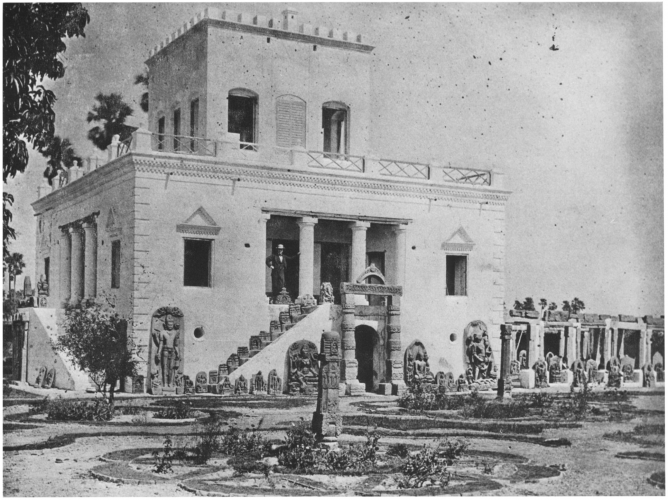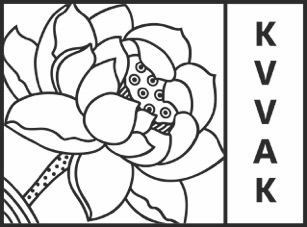
VVAK Lustrum Symposium ‘Collecting Asian Art in the Western World – Past, Present and Future’
- KVVAK – the recordings of the Lustrum Symposium
- View the photo-album: https://www.myalbum.com/album/ayDmHFEUUc0e
The Asian Art Society in the Netherlands (VVAK) was founded in June 1918 as a private initiative by a handful of connoisseurs with the intention to stimulate interest in art from Asia and to unite art lovers in the field. Ten years later, the organisation decided to start its own museum, which opened in 1932. Now – 100 years since its foundation – the VVAK’s pieces form a substantial part of the Rijksmuseum’s Asian art collection, and its members form a large group of dedicated enthusiasts.
The board of the VVAK is pleased to invite you to the international symposium Collecting Asian Art in the Western World: Past, Present & Future,on 23 June 2018.
The symposium will be held in the Rijksmuseum, the home of the VVAK’s collection, of which alternating highlights are displayed in the Asian Pavilion throughout the year.
We are proud to share the programme of this exciting event.
Date and location
Date: 23 June 2018, 9:30-19:30
Location: Auditorium Rijksmuseum Amsterdam
Registration
Members € 35, non-members € 80, students € 35, coffee/ tea, lunch and reception are included.
Register via the webshop on the VVAK website or follow the link below.
You may also register by sending an email to info@vvak.nl and transfer the entrance fee directly to the VVAK bank account stating your name and ‘symposium’:
Name: Vereniging van Vrienden der Aziatische Kunst
City: Den Haag
Bank account: NL33INGB0000188285
SWIFT code: INGBNL2A
Country code: NL
Symposium
PRIVATE COLLECTIONS AND PUBLIC MUSEUMS
Private art collectors and their gifts are at the foundation of most European and American art museums. This also applies to the field of Asian art, in the East as well as in the West. Especially from the late nineteenth century onwards connoisseurs have created outstanding collections, individually and collectively via societies. Most of the major collections of Asian art originally started as private initiatives and later developed into museums.
VVAK AND ITS 100TH ANNIVERSARY
The Vereniging van Vrienden der Aziatische Kunst (VVAK), or Asian Art Society in the Netherlands, was founded in 1918 as an entirely private initiative. The collection of the VVAK distinguishes itself from the collections of the various Dutch ethnographical museums by focusing on high quality art works only. The VVAK does not collect any form of export art made for the West. The growing collection was initially shown at the Stedelijk Museum in Amsterdam before it was moved to the Rijksmuseum in 1952, where it has been on loan ever since. The vast majority of the art objects displayed in the Asian Pavilion of the Rijksmuseum is the property of the VVAK.
ASIAN ART SOCIETIES IN EUROPE AND AMERICA
One of the earliest examples of a collectors’ society is the Bataviaasch Genootschap van Kunsten en Wetenschappen (Batavia Society for Arts and Science) in Batavia, now Jakarta, that was founded as early as 1778. Its collection is divided between the National Museum in Jakarta and the Museum Volkenkunde in Leiden. The English followed the Dutch with the foundation of the Oriental Ceramic Society in 1921, where after Germany founded the Gesellschaft für Ostasiatische Kunst in 1926 (East Asian Art Society). It was only after the Second World War that the first collections were initiated in the United States: the Society for Asian Art in San Francisco and the Asia Society in New York City, both in 1958. They both resulted in the foundation of museums and their members collectively assembled excellent art objects to exhibit publicly.
EUROPEAN FOUNDERS OF ASIAN ART MUSEUMS
One of the first museums for Asian art in Europe was initiated by the French connoisseur Emile Guimet and was based on his interest for ancient religions. The collecting policy of the VVAK was strongly guided by its co-founder and first chairman, the banker Herman Karel Westendorp, who personally bought important pieces for the society’s collection in the countries of origin in the 1930’s. Shortly after 1945, the Rietberg Museum was founded on the vast collections of the German-Swiss banker Eduard von der Heydt.
COLLECTION POLICIES: PAST, PRESENT AND FUTURE
The history of collecting can be viewed through a variety of paradigms, as keynote speaker prof. John Guy argues. He will analyse historical, cultural, political and ethnic framing of collecting Asian art, both in private and public arenas. The heyday of collecting non-western art is over now. Today, the export and import of art from other continents is strictly regulated. The provenance of each object must be checked on the (legal) circumstances of its acquisition and origin. At the same time, museums reconsider ways to exhibit Asian art and heritage, protecting it while at the same time trying to attract a broader and younger audience.
Programme
From 9.15 Welcome & Registration at the VVAK desk in the entrance hall of the Rijksmuseum
Coffee/tea in the Auditorium
10.00-10.15 Welcome by Taco Dibbits, Director General of the Rijksmuseum Amsterdam
Opening by Pieter Ariëns Kappers, Chair of VVAK, the Asian Art Society in the Netherlands
PART 1 MORNING PROGRAMME
Introduction to the programme by Lex Holst, Vice Chair of VVAK
10.15-10.50 ‘The highest of cultures’: motives of VVAK members for collecting Asian art- past & present
Dr. Renée Steenbergen, board member of VVAK, specialist in collecting history and arts philanthropy
10.50-11.25 Collecting by the ‘Bataviaasch Genootschap van Kunsten en Wetenschappen’(1778)
Prof. Marijke Klokke and dr. Francine Brinkgreve,respectively Professor of Art and Material Culture of South and Southeast Asia, Leiden University, and Curator for the Insular Southeast Asia collection, National Museum of World Cultures (a.o.Museum Volkenkunde Leiden and Tropenmuseum Amsterdam)
11.25-11.35 Dialogue: Reflections on collecting Asian art in the Netherlands, publicly and privately- past and present
Moderator: Lex Holst,Vice Chair of VVAK
11.35-12.00 Coffee/tea/water break

12.00-12.35 Sparking Interest for the arts of East Asia. On the history of the East Asian Art Society in Berlin (1926-1955, re-established in 1990)
Dr. Herbert Butz,former Deputy Director and Curator of Chinese Archaeology
and Chinese Applied Arts at the Museum of Asian Art, Staatliche Museen zu Berlin
12.35-13.10 Passion and Connoisseurship: Charles L. Freer (1854-1919) and Arthur M. Sackler (1913-1978) at the core of the American national collection of Asian Art
Prof. Jan Stuart,Melvin R. Seiden Curator of Chinese Art, Freer Gallery of Art and Sackler M. Sackler Gallery, SmithsonianInstitution, Washington D.C.
13.10-13.30 Dialogue: New perspectives on exhibiting Asian art in western museums
Moderator: Lex Holst, Vice Chair of VVAK
13.30-14.30 Lunch in Foyer
Possibility to visit the Asian Pavilion guided by curators Asian Art of Rijksmuseum

PART 2 AFTERNOON PROGRAMME
Moderator: Dr. Renée Steenbergen, board member of VVAK
14.30-15.05 Westendorp’s spectacles: the VVAK & collecting for the greater good
Menno Fitski, Head of Asian Art, Rijksmuseum Amsterdam
15.05-15.40 From «ars una» to the Museum Rietberg: Eduard von der Heydt and his legacy
Esther Tisa Francini, Lic. phil., Head of the Archives and the Provenance Research, Museum Rietberg, Zürich
15.40-16.05 Coffee/tea/water break
16.05-16.40 From Utopia to Museum: the birth of Emile Guimet’s Museum of Religions
Dr. Pierre Baptiste,Curator Southeast Asian Art, National Museum for Asian Art – Guimet, Paris
16.40-17.25 Keynote speech: Antiquarian collecting – Old World New Age
Prof. John Guy, Irving Curator of South and Southeast Asian Art, Metropolitan Museum of Art, New York
17.25-17.45 Discussion with afternoon speakers:
The future of collecting Asian art in the Western World
Moderator: Dr. Renée Steenbergen, board member of VVAK
17.45-17.55 Closing remarks / wrap up
Prof. Anne Gerritsen, Professor Kikkoman/VVAK Chair of Asian-European Intercultural Dynamics, Material Culture and Art, Leiden University
Closing remarks by Pieter Ariëns Kappers, Chair of VVAK
18.00-19.30 VVAK 100thAnniversary Reception
Drinks and canapés at the Atrium of the Rijksmuseum
Performance: Gamelan ensemble Swara Santi

